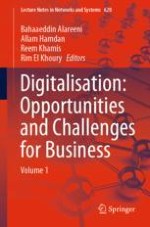2023 | OriginalPaper | Chapter
User’s Continuance Intention Towards Digital Payments: An Integrated Tripod Model DOI, TAM, TCT
Authors : A. Pushpa, C. Nagadeepa, K. P. Jaheer Mukthar, Hober Huaranga-Toledo, Laura Nivin-Vargas, Matha Guerra-Muñoz
Published in: Digitalisation: Opportunities and Challenges for Business
Publisher: Springer International Publishing
Activate our intelligent search to find suitable subject content or patents.
Select sections of text to find matching patents with Artificial Intelligence. powered by
Select sections of text to find additional relevant content using AI-assisted search. powered by
